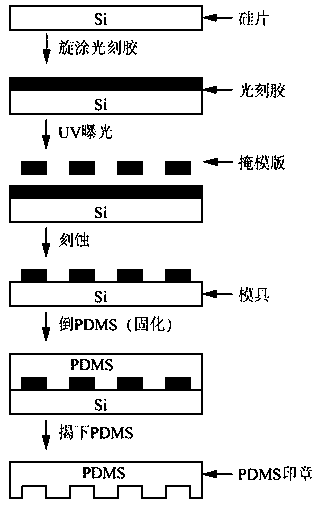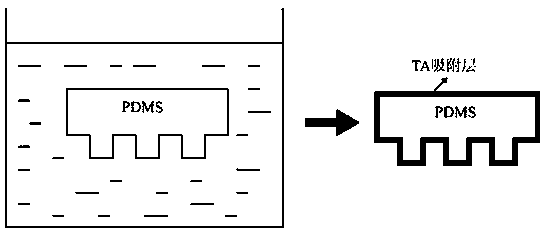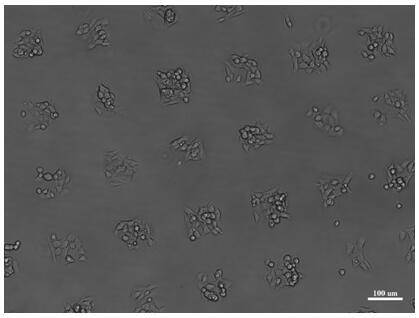Application of tannic acid serving as micro-contact printing ink to cell patterning
A technology of micro-contact printing and cell patterning, applied in the field of cell culture, can solve problems such as time-consuming and opaque patterns, and achieve the effects of simple steps, low price and wide sources.
- Summary
- Abstract
- Description
- Claims
- Application Information
AI Technical Summary
Problems solved by technology
Method used
Image
Examples
Embodiment 1
[0037] Printing of Tannic Acid Patterns on the Surface of Polyethylene Glycol Silane Modified Quartz Chips
[0038] 1. Oxidize the quartz sheet
[0039] Quartz sheet (8*8*0.5 mm 3 , purchased from Donghai County Weida Quartz Products Co., Ltd.) in acetone and absolute ethanol for 10 minutes of ultrasonic cleaning, then boiled in a mixture of concentrated sulfuric acid and hydrogen peroxide (volume ratio 3:1) for 1 hour, and cleaned with ultrapure water. blow dry. The quartz slice was oxidized in a low-temperature plasma processor for 6 min.
[0040] 2. Inert modification of quartz slices
[0041] The oxidized quartz slice was soaked in 6 g / L methoxypolyethylene glycol silane (MW2000) in toluene solution for 24 h, and 1% triethylamine was added as a catalyst. After the reaction was completed, wash 2 times with absolute ethanol, wash 2 times with ultrapure water, N 2 Blow dry and store in N 2 atmosphere.
[0042] 3. Preparation of polydimethylsiloxane stamp
[0043] Firs...
PUM
| Property | Measurement | Unit |
|---|---|---|
| translucency | aaaaa | aaaaa |
Abstract
Description
Claims
Application Information
 Login to View More
Login to View More - R&D
- Intellectual Property
- Life Sciences
- Materials
- Tech Scout
- Unparalleled Data Quality
- Higher Quality Content
- 60% Fewer Hallucinations
Browse by: Latest US Patents, China's latest patents, Technical Efficacy Thesaurus, Application Domain, Technology Topic, Popular Technical Reports.
© 2025 PatSnap. All rights reserved.Legal|Privacy policy|Modern Slavery Act Transparency Statement|Sitemap|About US| Contact US: help@patsnap.com



